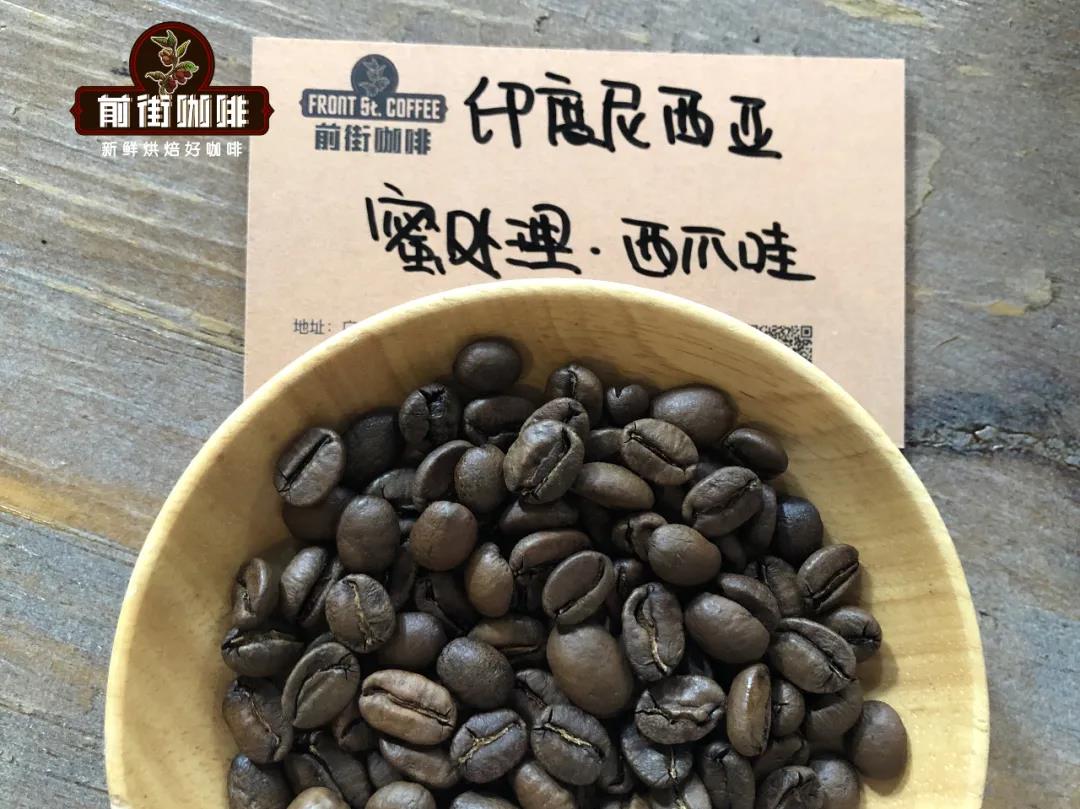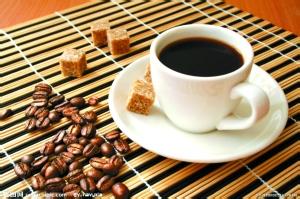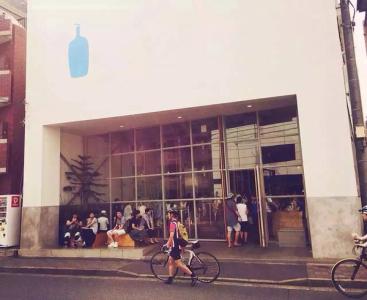Introduction to the taste characteristics of West Java coffee beans in Indonesia description of hand-brewed flavor of coffee beans treated with Java honey
Professional coffee knowledge exchange more coffee bean information please follow the coffee workshop (Wechat official account cafe_style)
When it comes to Indonesian coffee, its mellow coffee flavor is really unforgettable, for Indonesian coffee, and Manning coffee, has become synonymous with Indonesian coffee. Qianjie Coffee is a fan of Indonesian coffee. Many friends who have been to Qianjie Cafe will find that among the Indonesian coffee on the front street shelves, five coffee beans are from Sumatra Mantenin, including Golden Mantenin, Tiger Mantenin, Old Manning, Lin Dong Manning and Sun Manning. In fact, in addition to these five Mantenin, Qianjie also has a coffee bean from West Java, Indonesia. This coffee bean is very different from the Indonesian coffee flavor that many people remember. It has no rich coffee flavor with herbs and spices. Instead, it is more soft and sour tropical fruit. Next, let's talk about this coffee bean from West Java, Indonesia.

Product name: Indonesian West Java Aini Coffee beans
Producing area: Tiegula Mountain, West Java
Altitude: 1400-1600m
Variety: S795 Jember
Treatment method: sun honey treatment

Coffee producing area
West Java Province is a first-tier administrative district of Indonesia. Located in the western part of Java, facing the Java Sea to the north and the Indian Ocean to the south, including offshore islands, covering an area of 46300 square kilometers, Java has a tropical rain forest climate, which is hot and humid all the year round. The plains along the northern coast have the highest temperatures, while the mountains are much cooler. High humidity often creates a debilitating climate. From November to March of the following year is the northwest monsoon period, rainy and cloudy; from 4muri to October is the southeast monsoon period, with more sunny days and less rainfall. The average annual rainfall in Jakarta is about 1760 mm (69 inches). The average daily maximum temperature in Jakarta is 30 ℃ (86 ℉) and the lowest is 23 ℃ (74 ℉). In the inland highlands of Tosari (Tosari, 1735 meters (5692 feet) above sea level), the average temperature is 22 ℃ (72 Murray 47 ℉). Because volcanic ash periodically fertilizes the land, the soil in Java is very fertile.

The origin of the name of this West Java coffee bean
Aromanis "Aiqini" is a traditional dessert unique to Indonesia. It is made from a snack made from the basic ingredients of flour and sugar. Here, the coffee is named after Aromanis, indicating that the West Java coffee bean tastes like marshmallows. But coffee beans come from West Java and Ciwidey Garut. In fact, there are no special coffee seeds used, but tanned coffee can show such a chic flavor, which is, of course, not recognized in West Java, Indonesia. West Java coffee bean varieties
The breed of this inexplicably amazing bean belongs to S795. Known as Jember in Indonesia, S795 is introduced by Jember Coffee Research Center, a coffee research center in East Java, to Javanese farmers after introducing local varieties from India, and Javanese farmers directly call this S795 Jember.

S795 bean body color is blue and green, its original tree species natural variation comes from S288, while S288 is an excellent hybrid variety cultivated in India in 1946. S288 was named S26 after being mixed with Typica and S288 (the first generation), because the first generation of S288 was crossed between Arabica and Liberian Liberica and always had the fishy smell of Liberia. Indian botanists then used the first generation of S288 and Typica hybrid Kent and the second generation of S288 to become the present S795.
The current S795 variety is of Liberian blood, but its flavor is more elegant after carefully cultivated by Indian botanists. at the same time, because it inherits the characteristics of strong disease resistance and high yield, the Indonesian and Indian governments have been vigorously promoting the cultivation of this variety in recent years. From the complex life experience of S795, we can see that it is an artificially selected hybrid variety with Typica and liberica lineages in its blood, and years of careful breeding have created its unique flavor.
Coffee bean treatment
This West Java coffee bean is picked manually to ensure the stability of the fruit. After picking, the exocarp is peeled off and the flesh is preserved for sun treatment, which is what we call sun + honey treatment. After about a month of sun drying, wash and other treatment, and then let the beans stored for about half a month before packaging. Sun + honey treatment, the only purpose of this complex and high-risk process is to create a more complex and fuller taste spectrum. Reflect the wonderful feeling brought by the complex pedigree of this West Java coffee bean. Qianjie Coffee believes that the flavor of honey-treated coffee beans is better, sour taste and sweet taste are balanced, and because of the same sun exposure, the aroma of coffee beans themselves will be magnified and mellow.

How does Qianjie Coffee roast West Java coffee beans?
The Qianjie roaster observed that the density of the raw beans of West Java coffee is high, the firepower adjustment should be especially careful, and the fruit flavor and sweetness should be highlighted, so the Qianjie roaster decided to choose moderate roasting, which can fully show the uniqueness of the raw beans. After 1 minute, the initial firepower will be relatively large, and the firepower will be adjusted early until the initial stage of dehydration, so that the taste and aroma of the coffee become uniform.

Put the furnace temperature to 200 degrees Celsius, set the throttle to stew for 1 minute, adjust the firepower to 160 degrees, the throttle remains unchanged, adjust the firepower to 165 degrees, drop to 130 degrees, bake to 5: 35 ", the temperature is 152 degrees, the bean table turns yellow, the smell of grass disappears completely, dehydration is completed, throttle tune 4.
In the 9th minute, ugly Hu wrinkles and black markings appear on the bean table, and the smell of toast obviously changes to the smell of coffee, which can be defined as a prelude to an explosion. at this time, listen clearly to the sound of an explosion point, to 9: 21 "start an explosion, small firepower remains the same, the throttle is fully open 5 (the firepower should be very careful, not so small as no cracking sound) 40 degrees, 198.6 degrees when the pot. Test report of West Java Coffee Bean Front Street Cup
Dry aroma: strong aromas of flowers, dried fruit and red wine
The sour taste is gentle and not bright, keeping it elegant under a variety of complex fruit flavors.
In view of the obvious flavor of preserved fruit, the whole tends to be mellow and strong in texture, but not too thick.

The main feature of Qianjie West Java coffee bean is its complex sweetness and fruity aroma, which is more obvious than African Yega Chuefei, which is also famous for its floral aroma. Its taste spectrum is inclined to the tropical fruits with heavy flavors such as mango and polo honey, which are complex and calm, while the unique honey treatment techniques bring a faint flavor of red wine. This bean is a typical example of sweetness, even in the global coffee pedigree.
Recommendation of parameters of West Java Coffee beans cooked in Qianjie
Water temperature: 90-91 degrees
Degree of grinding: BG#6m (fine sugar size / 20 sieve bowl sieve powder to 80%)
Ratio of powder to water: 1:15
Amount of powder: 15g

Qianjie cooking technique:
In the first stage, 30 grams of water is injected for 30 seconds, followed by 95 grams (about 125 grams indicated by the electronic scale). The injection is completed in about 1 minute, and the remaining 100 grams are injected at 3 places in the powder layer when the water level drops to 2 grams (about 225 grams shown by the electronic scale). About 1 minute and 40 seconds. The filtration is completed, remove the filter cup and complete the extraction.
West Java coffee bean cooking flavor: very rich tropical fruit flavor, mango, jackfruit and other fruits sweet, with red wine fermentation feeling.
For more boutique coffee beans, please add private Qianjie coffee on Wechat. WeChat account: kaixinguoguo0925
Important Notice :
前街咖啡 FrontStreet Coffee has moved to new addredd:
FrontStreet Coffee Address: 315,Donghua East Road,GuangZhou
Tel:020 38364473
- Prev

Detailed introduction of the characteristics and taste of Ashasha coffee beans in Yega Xuefei G1 Jietipu area.
A brief introduction to the characteristics and Origin of Ashasha Coffee beans in Yega Xuefei G1 Jettip Coffee experts will use some words to describe the taste, such as botanical, pineapple juice or cedar, and so on. But I think that it is very difficult for language to properly express the sensory experience, and I will be influenced by this view when I talk to the public about the flavor of coffee. It's because of me, too.
- Next

Coffee lovers introduction to the taste description of Nicaraguan boutique coffee beans
Coffee lover Nicaraguan boutique coffee beans taste description introduced in the medium and deep roasting degree, with a certain sweet, sour taste is not obvious, the rhyme with a little chocolate and dried fruit flavor, as the temperature decreases, you can feel the acid, but still very mild. The taste is clean, but the mellowness and persistence in the mouth are lacking. Suitable for whether or not like sour coffee, like the taste
Related
- Detailed explanation of Jadeite planting Land in Panamanian Jadeite Manor introduction to the grading system of Jadeite competitive bidding, Red bid, Green bid and Rose Summer
- Story of Coffee planting in Brenka region of Costa Rica Stonehenge Manor anaerobic heavy honey treatment of flavor mouth
- What's on the barrel of Blue Mountain Coffee beans?
- Can American coffee also pull flowers? How to use hot American style to pull out a good-looking pattern?
- Can you make a cold extract with coffee beans? What is the right proportion for cold-extracted coffee formula?
- Indonesian PWN Gold Mandrine Coffee Origin Features Flavor How to Chong? Mandolin coffee is American.
- A brief introduction to the flavor characteristics of Brazilian yellow bourbon coffee beans
- What is the effect of different water quality on the flavor of cold-extracted coffee? What kind of water is best for brewing coffee?
- Why do you think of Rose Summer whenever you mention Panamanian coffee?
- Introduction to the characteristics of authentic blue mountain coffee bean producing areas? What is the CIB Coffee Authority in Jamaica?

